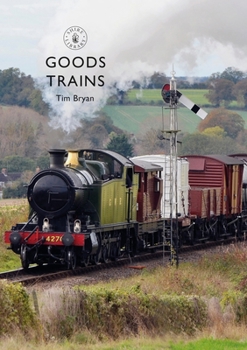Goods Trains
Goods transportation was the lifeblood of early railways, and remains a key part of rail services today. This concise illustrated guide illuminates the history of goods trains across Britain.
Though trains are now used primarily to carry passengers, the earliest railways in Britain were created to move goods, and a teeming and efficient infrastructure made railway the dominant freight transport system until the road haulage revolution. Throughout the nineteenth century these trains were the lifeblood of the nation, transporting precious raw materials, construction and industrial items, and fresh produce from coastal areas and farms into the center of bustling cities. This informative illustrated history shows how cargoes were carried and how the system was organized, from the individual goods containers, through whole trains, to sidings, Railway Clearing Houses, goods sheds, and the final destination, whether it was a town, city or harbor. Author Tim Bryan also examines the basic rolling stock of these trains, from the humble coal wagon to high-tech chemical containers. The text is supported by stunning illustrations and photographs, bringing the subject matter vibrantly to life.





